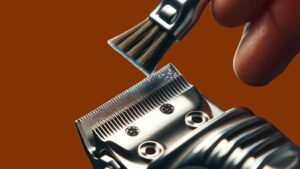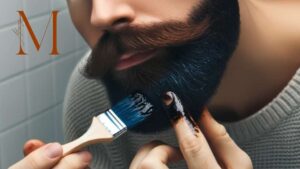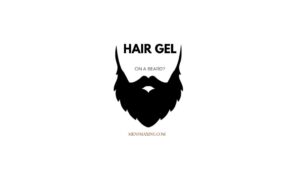
Top 5 Solutions for Men to Control Oily Skin
Glistening surface, patches with a delicate flake, susceptibility to acne, and occasional reddened spots serve as telltale signs indicating an oily skin type.
Navigating the challenges of oily skin has been a part of my journey since adolescence, and I understand the occasional sense of overwhelm it can bring. After all, who desires a forehead that radiates like a lighthouse in the midst of darkness?
If you’ve been contending with the repercussions of oily skin, rest assured that a greater number of individuals share your experience than you might envision.
Interestingly, did you realize that men are actually more predisposed to possessing oily skin compared to a majority of women?
Yes, it’s true!
This leads me to the following inquiry:
What Is Oily Skin
Your skin needs natural oil to stay soft and moisturized. The amount of oil your face produces determines if your skin is oily, combination, or dry.
Oily skin happens when your face makes too much oil, making it look greasy. This is because big oil-producing glands in your skin make too much oily stuff called sebum. Sebum makes your skin shiny and greasy.
These glands are everywhere on your skin, except your palms and soles. They start making sebum when you’re born, and make more as you get older – Sebum mainly protects your skin and hair from losing moisture, but too much sebum makes your skin oily, clogs your pores, and causes acne.
Characteristics Of Oily Skin

1. Shiny Appearance
Oily skin often looks shiny and reflective, especially on the forehead, nose, and chin (T-zone).
2. Enlarged Pores
The pores on oily skin tend to be larger and more noticeable, which can contribute to a rough texture.
3. Prone to Acne
Oily skin is more susceptible to acne breakouts due to the excess oil clogging pores and creating an environment for bacteria to thrive.
What Causes Oily Skin In Men?
Oily skin can result from various factors. Here are the main reasons:
- DHT: In men, DHT – Dihydrotestosterone is a powerful hormone converted from testosterone. It pushes your skin’s oil glands to produce more sebum, leading to oily skin.
- Genetics: If your parents had oily skin, you might inherit it. Overactive sebaceous glands, responsible for oil production, can cause oily skin and hair.
- UV Ray Exposure: Sun exposure not only ages your skin and raises skin cancer risks but can also increase oil production. UV rays prompt your skin to produce more oil to stay hydrated.
- Weather Changes: High humidity, common in hot and humid areas, can influence your skin type. It often leads to increased oil production, resulting in oily skin.
5 Ways To Get Rid Of Oily Skin

1. Moisturize Your Skin Daily

No matter what your skin type is, moisturization is a must! Moisturizers are like sponges for your skin. They soak up water from the air and keep it locked in your skin, making it stay nice and hydrated. They also tell your body to make something called ceramides, which are like a protective shield for your skin. This shield stops water from escaping, so your skin doesn’t get dry and flaky.
If you have oily skin, you can choose oil-free, lightweight water-based moisturizers. Use a moisturizer that contains non-comedogenic ingredients (that won’t block pores) like shea butter, neem oil, sunflower oil, sweet almond oil, grapeseed oil, etc. Also, go for a lightweight, non-greasy moisturizer to counter your skin’s natural oil production.
When picking moisturizers, remember these points:
- Ceramides: These are important for strong skin barriers and moisture retention. They keep your skin healthy and prevent issues like dryness and irritation. Look for ceramide labels like AP, NP, EOP, NG, and NS.
- Humectants: These attract moisture to your skin, found in products like serums, lotions, and creams. Ingredients like glycerin, hyaluronic acid, sorbitol, and propylene glycol are common choice for oily skin, for natural options – aloe vera and honey.
- Non-comedogenic Moisturizer: Non-comedogenic moisturizers help avoid blocked pores that lead to acne and inflammation.
- Lotion-based Moisturizer: Heavy creams can clog pores and worsen pimples. Choose a light lotion-based moisturizer that goes into your skin easily, managing oil and giving nutrients.
2. Wash Your Face Twice A Day

Wash your face twice a day with a face wash to get rid of dirt and extra oil, and to stop your pores from getting blocked.
If you have oily skin and want to stop acne, you can use an oil control cleanser – it also helps balance your skin’s natural stuff.
Wash your face with warm water, this helps the cleanser to clean your skin better and keeps your skin’s oils in check.
Best cleansers for oily skin are the ones with tea tree oil or peppermint oil.
You can also clean your face with a gentle soap and warm water, depending on how your skin feels – Just make sure the soap isn’t too harsh.
3. Clean Skin With Tonner

Tonner helps clean your skin, keeps the balance right, and stops too much oil. Use it after washing or shaving to calm your skin.
Look for a toner with salicylic acid. This stuff fights inflammation and stops acne from happening. It also kills bacteria that cause acne.
4. Apply Face Mask

Face masks are like a treat for your skin. They give it good stuff to fight off bad things, control oil, and make it glow.
Use a face mask once or twice a week to really clean your skin. Try clay masks to suck up extra oil from your pores. Green clay is the best for stopping too much oil.
5. Revitalize Your Skin with Exfoliation

Exfoliation gives your skin a boost, by getting rid of dead skin cells, it brings out fresh, healthy skin, making you look younger. Regular exfoliation also stops bacteria from building up and clears out blocked pores.
Do exfoliation once or twice a week! Don’t do it too often, as that can make your skin dry and irritated, causing it to make too much oil. Be gentle when using an exfoliating cleanser.
For oily or acne-prone skin, try using salicylic acid, which is a special kind of acid. It helps open up your pores and reduces acne.
If you’re using a scrub, pick one with natural stuff in it. You can also make your own scrub with simple things like kiwi, oatmeal, coffee, walnut, or cucumber.
Homemade exfoliating method:
- Mix 2 tablespoons of ground oatmeal, ¼ teaspoon of sea salt, 1 tablespoon of water, ½ teaspoon of honey, and ½ teaspoon of olive oil in a bowl until it’s a paste.
- Gently rub the mixture onto your skin for about a minute.
- Wash it off with cold water.
- Use it once a week.
Handling Oily Skin: Helpful Pointers
- Skip hot showers.
- Pick light, not oily lotions.
- Go easy on scrubbing – once a week is enough. Too much can hurt your skin’s shield and dry it out.
- Choose products that won’t clog your pores, keeping acne away.
- Eat Vitamin C-rich foods like greens and citrus fruits.
- Use toners after washing your face.
- Apply clay masks weekly.
- For too much oil outside, use blotting paper to dab it away.
Frequently Asked Questions
Yes, many brands offer skincare products formulated for men with oily skin. Look for products labeled “matte,” “oil-control,” or “shine-free.”
Shaving can sometimes lead to irritation and increased oil production. Use a gentle shaving cream and consider an alcohol-free aftershave to prevent further irritation.
Dermatological treatments like chemical peels and laser therapy can help manage oily skin. Consult a dermatologist to determine the best treatment plan for your specific needs.
Before exercising, cleanse your face to remove excess oil. Consider using a facial cleanser with salicylic acid to help prevent post-workout breakouts. Afterward, cleanse again and use a lightweight moisturizer.
Conclusion
With these top 5 solutions for men, you can regain control over your oily skin and flaunt a fresh, confident look all day long.
You May Also Like:


